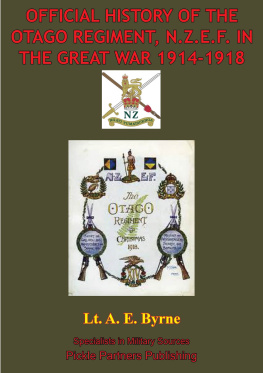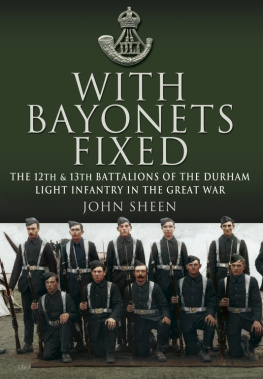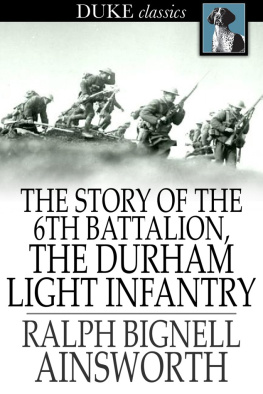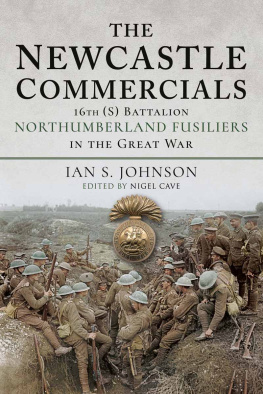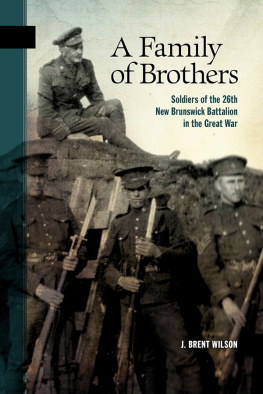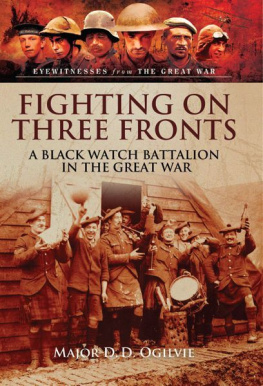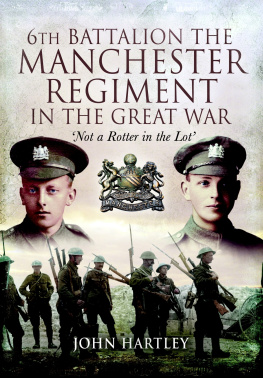Foreword
*
During one of the short periods of training in 1917, it was suggested that lectures should be delivered to the troops on the history of their battalions in France. Accordingly Capt. G. Kirkhouse, then Assistant Adjutant, set to work to collect material for this purpose. Owing to there being no officers, and very few men, who had served continuously with the Battalion since April, 1915, the task was not easy, and it was found impossible to complete the information in time for a lecture before the Battalion returned to the line. The material was carefully preserved, however, and was the only portion of the records which survived the disaster of the 27th May, 1918. As soon as time permitted, the task was continued, but owing to there being very few survivors of earlier days, many details have probably escaped notice. Imperfect and incomplete as the story is, however, it is hoped that the details related will serve to recall other incidents, both pleasant and unpleasant, to those members of the Battalion who have been fortunate enough to survive.
It is regretted that it has not been found practicable to include a chapter on the inner life of the Battalion which centred round the characters of some of its members. So many names occur to one's mind that a chapter would be inadequate to mention all, and the exclusion of any would have involved an invidious and unjustifiable selection.
R.B.A.
July, 1919.
Chapter I - The "Salient"
*
First Phase.
The end of March, 1915, found the 50th (Northumbrian) Division of the Territorial Force awaiting orders to proceed overseas. The infantry of the Division consisted of the 149th Infantry Brigade (4th, 5th, 6th and 7th Battalions Northumberland Fusiliers), the 150th Infantry Brigade (4th Battalion East Yorkshire Regiment, 4th and 5th Battalions Yorkshire Regiment, and 5th Battalion The Durham Light Infantry), and the 151st Infantry Brigade (6th, 7th, 8th and 9th Battalions The Durham Light Infantry). Early in April, when the 6th Battalion The Durham Light Infantry were in billets at Gateshead, the orders arrived and on the 10th April Capt. F. Walton proceeded to Havre to make arrangements for the arrival of the transport section. The first detachment of men to leave Gateshead consisted of the transport and machine-gun sections which, under Major J.E. Hawdon, Second in Command, and Lieut. H.T. Bircham, Transport Officer, entrained at the Cattle Market, Newcastle, on the 17th April for Southampton, en route for Havre.
Two days later the remainder of the Battalion entrained at the Central Station, Newcastle, with the following officers: Lieut.-Col. H.C. Watson in command, Capt. J.W. Jeffreys, Adjutant; Major W.M. Mackay, Medical Officer; Capt. A.P. Cummins, commanding A Company; Major S.E. Badcock, commanding B Company; Capt. W.H.D. Devey, commanding C Company; and Capt. J. Townend, commanding D Company. Arriving at Folkestone the same day, the Battalion embarked for Boulogne, where it arrived about midnight and marched up to Ostrohove Camp.
The following day it entrained at Pont de Briques Station, on the train which brought the transport and machine-gun sections from Havre. The complete battalion detrained at Cassel, and after marching all night arrived in billets at Hardifort at 5 a.m. on the 21st April.
On the 23rd April orders were received to march at very short notice to Steenvoorde, where the whole of the 151st Infantry Brigade, commanded at this time by Brig.-General Martin, was assembled in a field at the eastern end of the town. During the remainder of the day the men were allowed to rest. At dusk two battalions of the Brigade, the 7th and 9th Battalions, marched off in fighting order. The other two Battalions (the 6th and 8th) proceeded by 'buses through Poperinghe to Vlamertinghe, where they took over a hut camp recently vacated by the 9th Royal Scots.
It was now evident that the lessons which the Battalion had learnt during its long period of training were very soon to be put into practice. The 24th April was spent in testing rifles and making final preparations for action, and in the evening an order arrived from the Brigade to get ready to move quickly. This order was given out and within half an hour the Battalion was on the pav road, marching towards Ypres. It entered the town as night settled on it. At this date the town was not ruined and the results of the shelling were hardly noticeable. As the Battalion was passing the Cloth Hall a shell came screaming faintly towards it, and, passing over, burst with a dull roar in the city a quarter of a mile away. There had been no talking in the ranks nor any sound except the beat of ammunition boots on the pav, but when this shell screamed overhead and burst, ejaculation in the good old Durham tongue could be heard passing cheerily up the length of the column. Two or three more shells passed over, but none burst near the Battalion.
Reaching the top of the hill to the east of the city and leaving the white walls of Potijze Chteau on the left, the Battalion turned off the road and filed into the G.H.Q. line, a Battalion of the Shropshire Light Infantry climbing out to make room. This trench was of the breastwork type, and a novelty to the men whose idea of a trench was a ditch below the ground level. The dispositions of the Battalion were as follows: A Company were on the south side of the Potijze road and the remainder on the north side, with B Company on the right, D Company in the centre, and C Company on the left. The machine-gun section was with D Company. Transport lines were established just behind the Chteau near to a Canadian Battery. The position was unfortunate, for the section came under heavy shell fire and had several men and horses hit.
Sunday, the 25th April, was the first day spent by the Battalion in the trenches. There was a considerable amount of shelling, but fortunately the Battalion in the trenches did not suffer. In the evening, as it got dark, the Battalion moved out of the trench and, forming up on the road which it had left the previous night, marched in fours for about a mile to Velorenhoek village, which was then almost intact. There the Battalion came under the orders of the 85th Infantry Brigade, and halted. All ranks slept for some hours on the roadside, or in the fields, gardens or cottages close to the road. Before dawn the Brigadier ordered the Battalion to vacate the village, and the column moved a few hundred yards up the road to the east. Here the Companies left the road and the men improved with their entrenching tools the little cover in the form of ditches and trenches which was to be found, and then lay down. Throughout this and the succeeding days the men were in marching order with full packs. The transport moved back to Potijze Wood, except the ration limbers, which went back to Poperinghe.


